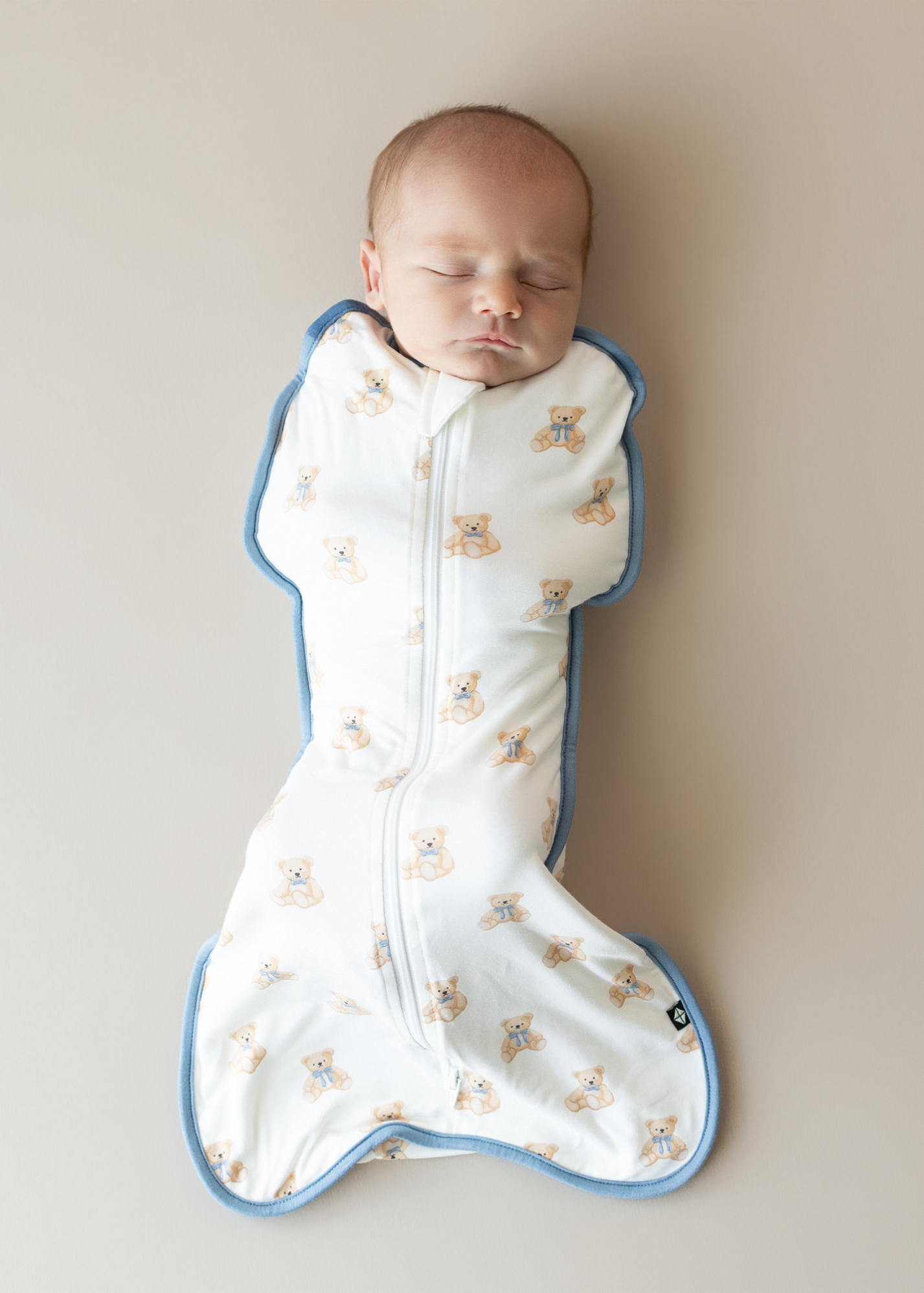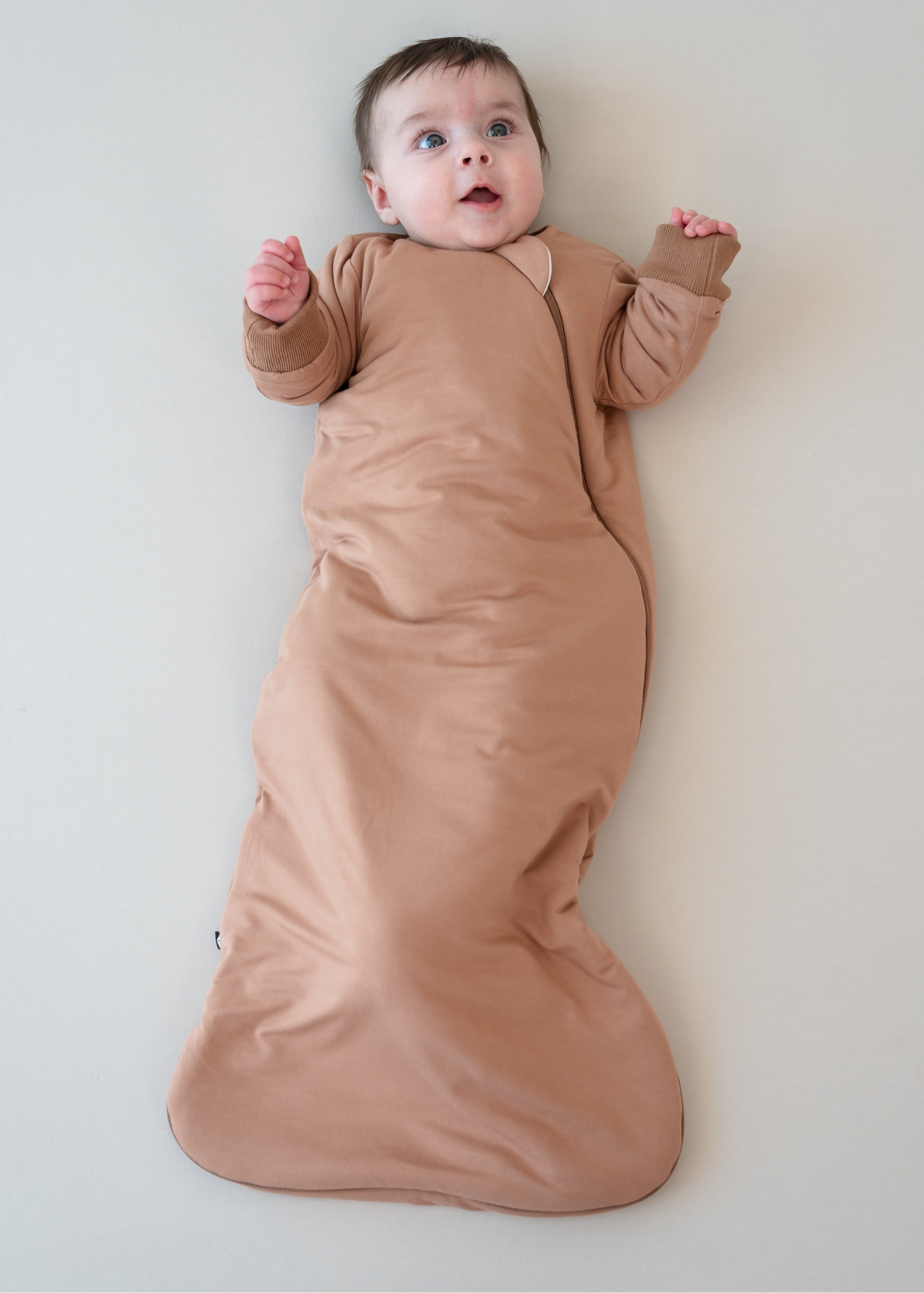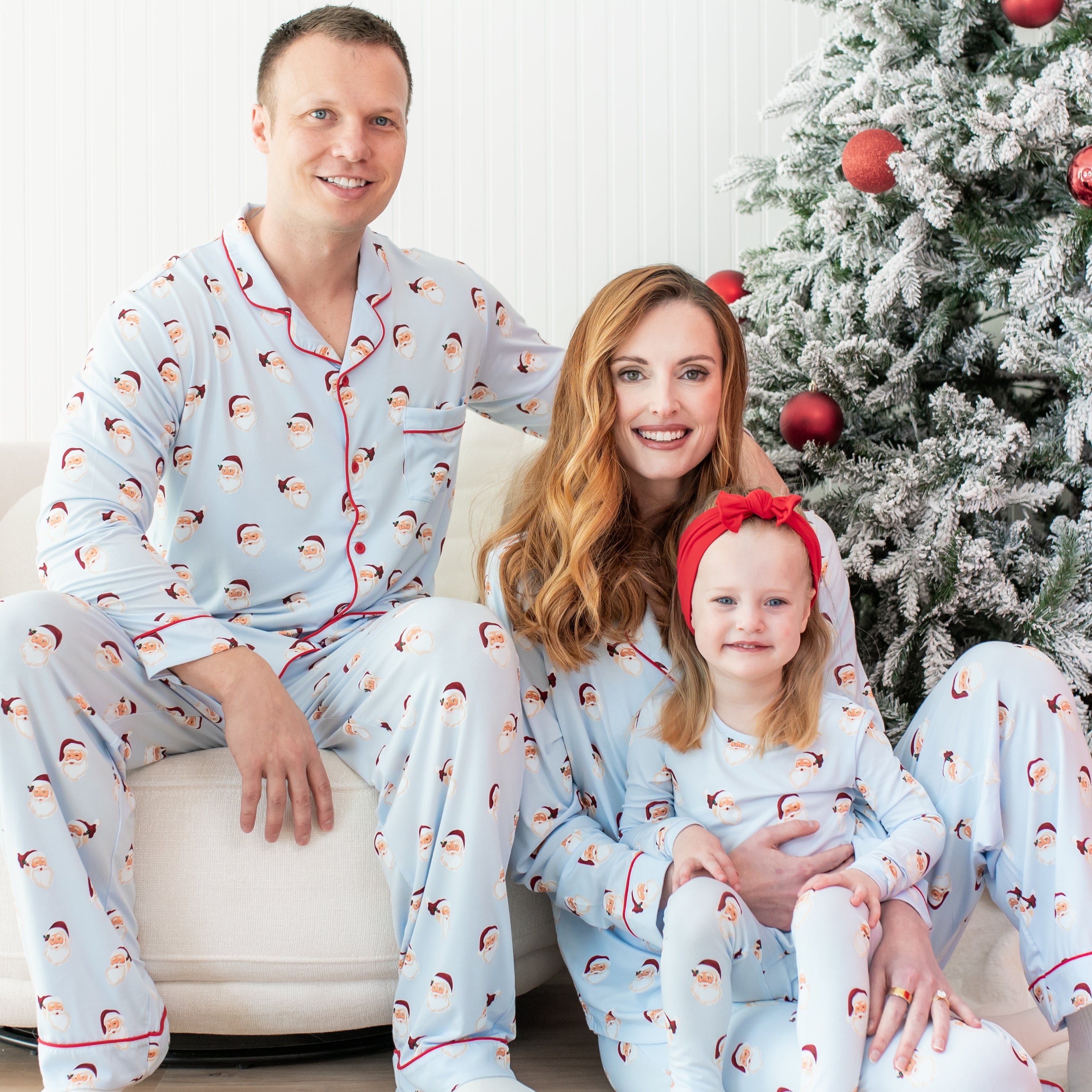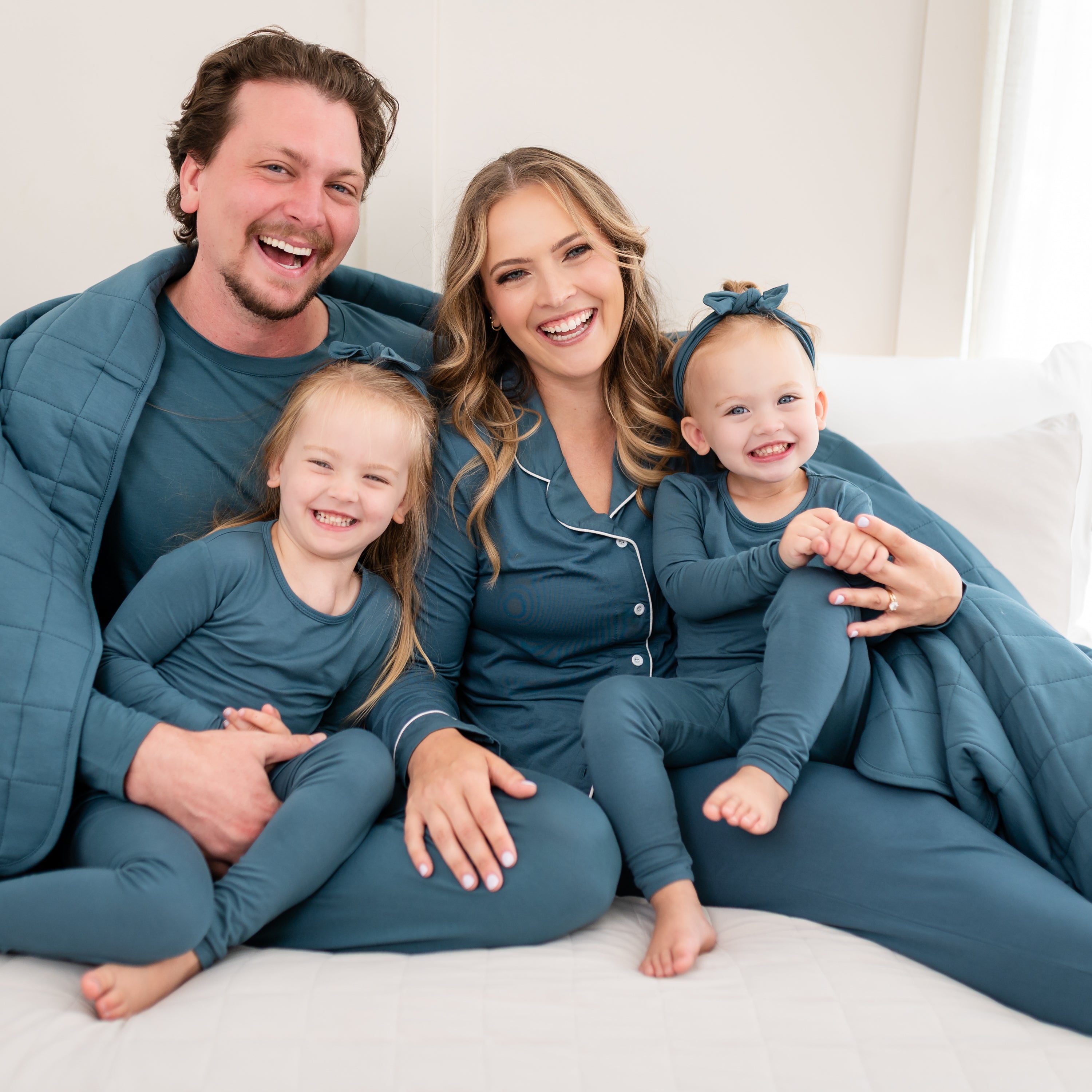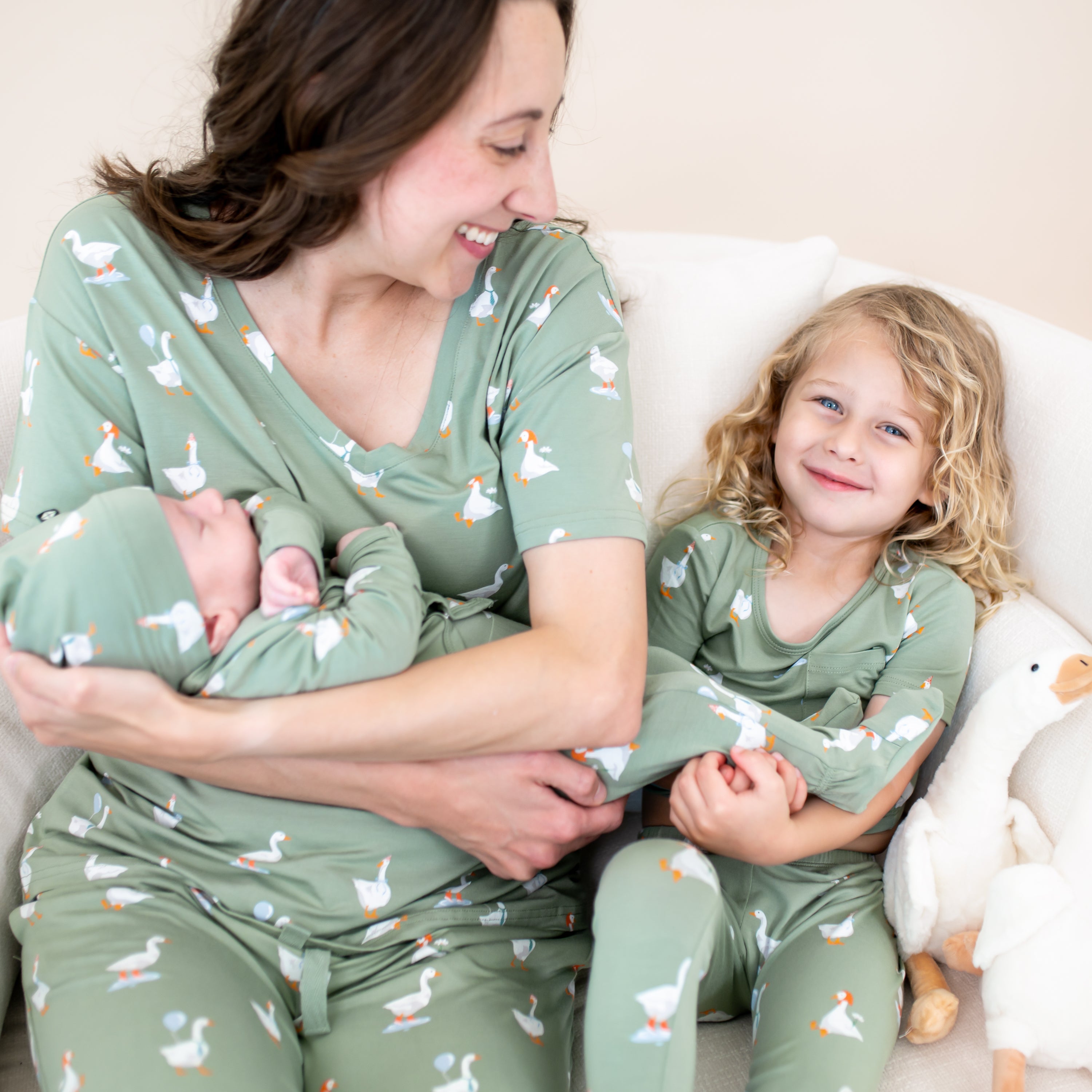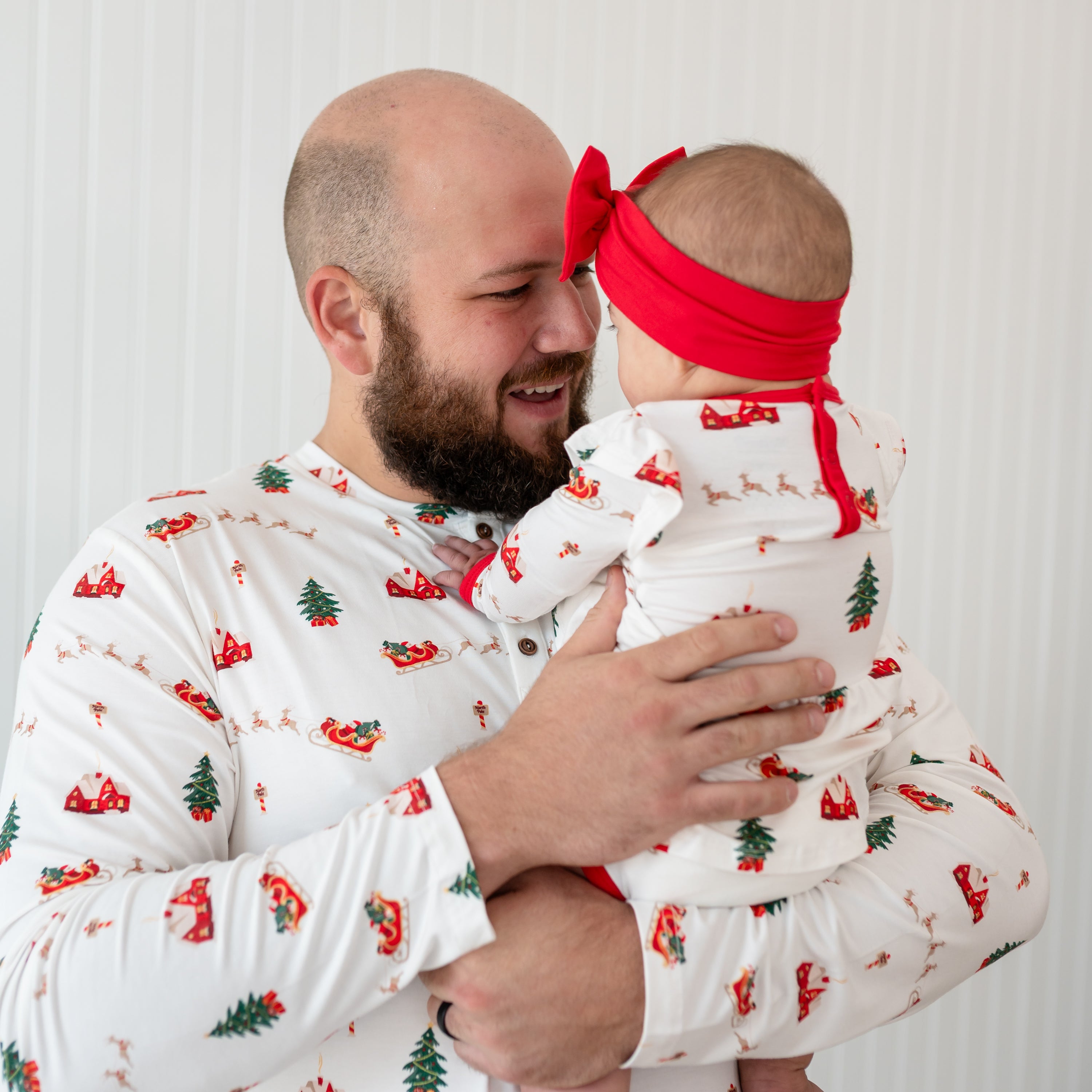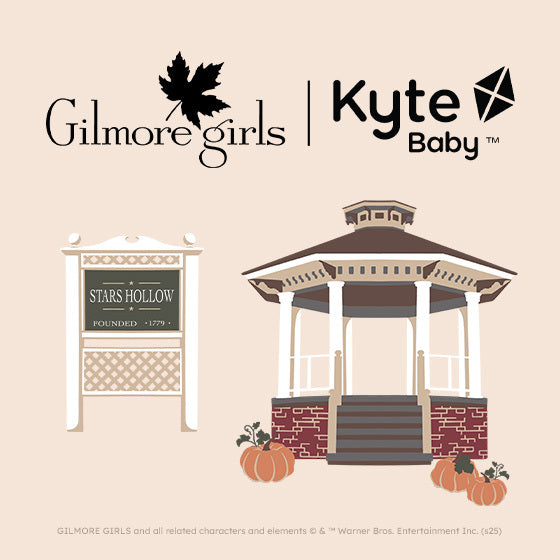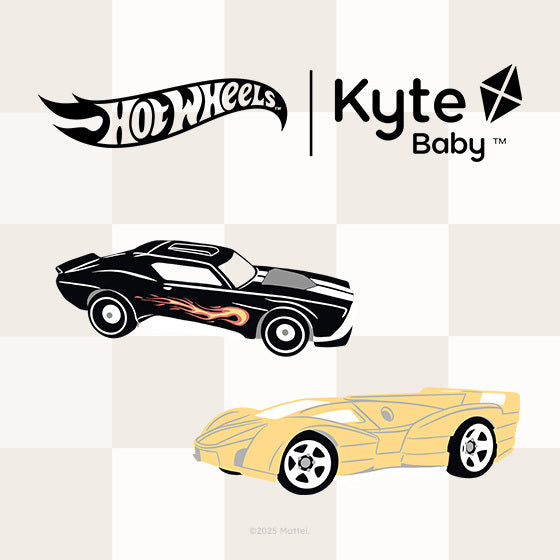With the myriad of newborn sleep aids on the market promising to help your baby sleep through the night, it can be hard to understand the difference between the good, the gimmicky, and the downright unsafe. We’re here to help you understand the ins and outs of swaddle blankets, swaddlers, and sleep sacks, so you can find what works best for your family and get straight to supporting the best sleep for your little one.
What is a Swaddle?

A swaddle is a length of fabric, often in the form of a swaddle blanket or other wrap, that snugly encircles a newborn’s torso and arms. This snug wrap helps comfort a newborn by mimicking the cozy environment of the womb. Archaeological evidence shows that humans have swaddled babies since as early as 4000 BC, and generations of parents have used this technique to soothe their little ones and help them sleep.
How Can Swaddling Support Newborn Sleep?
In the early newborn days, sleep is precious, and it’s likely no one in your house is yet “sleeping like a baby.” A swaddle can help you and baby both get there faster. A swaddle blanket supports a number of newborn needs to help everyone get a little more shut-eye.
Swaddle to Minimize the Moro Reflex
Babies are born with a Moro reflex, commonly called the startle reflex, which causes them to involuntarily fling their arms outward and upward when they are startled. This reflex may be triggered during sleep by a sudden movement, a loud noise, bright lights, or even their own cries.
While the Moro reflex is a completely normal part of newborn development, the involuntary arm movements that result can make it difficult to keep your newborn sleeping blissfully. A swaddle blanket can help minimize the disruptions of the Moro reflex by keeping your baby’s arms wrapped gently at their side or chest, preventing the abrupt movements that can often cause little ones to wake.
Swaddle to Support Thermoregulation
Newborns are unable to regulate their own body temperature and rely on caregivers to provide appropriate layers of warmth to suit their environment. A thin, breathable layer like a swaddle blanket can help a baby avoid heat loss from exposed skin, while leaving flexibility to add or remove a layer.
Swaddle to Create a Comforting Sleep Routine
Sleep hygiene is an important part of supporting good sleep habits for your little one. Creating a reliable bedtime routine, even from the early newborn days, helps signal to your baby when it’s time for rest. A bedtime routine can be as simple as a cuddle and a song, followed by snuggling into a cozy swaddle. A strong sleep routine will help everyone in the family achieve better rest.
When to Stop Swaddling Your Baby
Swaddling often seems like a magical sleep solution, but unfortunately, it can’t be used forever. Swaddling is only safe for babies who are sleeping on their backs. For safe sleep, stop using a swaddle as soon as your baby begins to show signs of rolling or around 8 weeks of age—whichever comes first.
Ease the Transition with a Swaddler

While you may not look forward to the transition away from the trusty swaddle, making this switch is simple if you choose a hybrid swaddle solution like the Kyte Baby sleep bag swaddler. When using the Kyte Baby sleep bag swaddler, simply remove the Velcro wrap to convert your newborn swaddler into a sleep bag that will fit your baby until they’re about 13 lbs. and 25” tall.
What are Sleep Sacks for Newborns?

Sleep bags are wearable blankets that were designed as a safe alternative to loose bedding in the crib, which the American Academy of Pediatrics (AAP) advises against for safe sleep. The organization recommends placing your baby on their back to sleep in an empty crib with only a tight-fitting crib sheet.
Although loose blankets aren’t safe for baby sleep, many parents face the challenge of keeping their little ones comfortable and warm without them. Luckily, sleep sacks—also known as sleep bags—are a comfy, cozy solution that is safe for all ages. These wearable blankets zip around your baby to provide warmth and soothing comfort as they sleep.
How Do the Different Baby Sleep Solutions Compare?
When shopping for a sleep aid for your newborn, you may wonder about the difference between sleep sacks, swaddlers, and swaddle blankets, and if one is better than another. Each garment has its own pros and cons, but we have a few key insights that may help you decide which item is the better fit for your baby.
Pros and Cons of Swaddle Blankets
A swaddle blanket supports a newborn while their Moro reflex is still active, but does have a learning curve. Until you master the art of folding and tucking the fabric snugly and securely, it can be cumbersome to navigate, especially during the haze of the early newborn days. Swaddle blankets also have the benefit of a long lifespan; once your baby can no longer be swaddled, the blanket makes a cozy nursing cover, snuggly lovey, or toddler blanket.
Choosing the Right Swaddle Blanket

One of the big benefits of a swaddle blanket is that one size fits all. However, you should carefully consider the fabric type and size of the blanket before committing. A swaddle blanket must be lightweight enough to fold without bulk, and it must be generously sized.
A swaddle blanket should be a minimum of 40” x 40”, but bigger is better. You’ll want to have plenty of fabric to fold and tuck the loose ends of the blanket to ensure that the fit is secure.
The Kyte Baby swaddle blanket is a generous, oversized 46” by 46” of buttery soft rayon made from 97% bamboo. Our signature fabric is gentle on sensitive newborn skin, even easing uncomfortable symptoms of eczema, and has just enough stretch for the perfect wrap. Bamboo’s natural moisture-wicking and temperature-regulating properties make it the perfect fabric choice for swaddling your little one during those earliest weeks.
Pros and Cons of Swaddlers
A swaddler is a specialized sleep aid that offers the ability to quickly and easily secure your baby’s arms and give them comforting, gentle pressure without all the folding and tucking that comes with a swaddle blanket. They are usually stretchy designs made with Velcro for a quick and easy wrap, which is especially ideal for middle-of-the-night changes.
However, these newborn sleep solutions have a short lifespan. They’re only usable for newborns and, with a few exceptions like our Sleep Bag Swaddler, can’t be converted for alternative uses once your baby outgrows them.
Pros and Cons of Sleep Bags
Sleep sacks for newborns are incredibly easy to use, but since they leave your baby’s arms free, they do not help with the newborn startle reflex. Startling awake is a major cause for your newborn’s sleep disruptions, so a sleep sack may not be the best option during those earliest weeks. However, while most babies love the comfort of a snug swaddle, not all do. Sleep sacks make a great option for parents with littles who like more movement. They can be used from birth all the way through the toddler years, until your little one prefers to use a loose blanket. We even have an adult sleep bag option for parents!
Safe Sleep Considerations for Babies in Sleep Sacks and Swaddles
Always place your baby on their back for sleep, especially when they are swaddled. When your baby begins to roll over, stop using a swaddle blanket or swaddler. Make sure you keep your baby’s arms unrestricted in case they roll over in the crib.
The AAP safe sleep guidelines recommend snug-fitting sleep sacks as a safe alternative for newborns for those opting out of swaddles. Using a sleep bag instead of a loose blanket for your baby greatly minimizes their risk of sudden infant death syndrome (SIDS), but you’ll want to ensure you use it properly for your baby’s safety and best sleep.
Avoid weighted baby sleep garments, which the AAP cautions against. Kyte Baby products come in various thicknesses for different temperatures, but none of our baby sleep garments are weighted for therapeutic purposes. Ensure you choose the correct fabric weight, or TOG, for the room temperature to prevent your baby from overheating or getting too cold.
What is TOG?

TOG stands for Thermal Overall Grade and is an indication of how warm a garment is. Many fabrics are assigned a TOG rating to help consumers make an informed decision about the warmth of their items. It’s important to note that the TOG rating should be selected based on the temperature of the room where your baby will sleep, not on the outside temperature. Kyte Baby offers sleep bags from 0.5 TOG to 2.5 TOG to fit the needs of any climate:
- 0.5 TOG: 74ºF - 78ºF
- 1.0 TOG: 69ºF - 73ºF
- 2.5 TOG: 61ºF - 68ºF
How to Choose the Right Size Swaddlers and Sleep Sacks for Your Newborn
While it’s tempting to size up when you purchase a sleep sack for your newborn to get as much growing room as possible, dressing them in an oversized sleep sack is not safe. Choose the proper size sleep bag to ensure that the swaddler or sleep bag isn’t loose enough to pose the risk of suffocation.
A properly fitted sleep sack for newborns should be worn snugly around the shoulders with arm holes that are not gaping. The torso shouldn’t be tight, but it should be reasonably trim.
Kyte Baby sleep bags are long to accommodate the wiggliest legs and frequent growth spurts, so there’s no need to size up prematurely. Our sleep bags are also cut generously through the thighs to allow for proper hip development.
Kyte Baby Sleep Sack Sizing
- XS: 7-13 lbs.; 20-25 inches
- S: 14-20 lbs.; 22-27 inches
- M: 18-30 lbs.; 26-33 inches
- L: 28-42 lbs.; 33-40 inches
- XL: 38-50 lbs.; 37-47 inches
Swaddler Fit Safety Checklist
A swaddler has a few additional fit requirements to ensure that your baby is both snug and safe. Each time you wrap your baby, run through the following fit checklist to ensure you are using the swaddler correctly:
- Chin: Swaddler is a couple of inches below the chin
- Shoulders: Swaddler is below the shoulders
- Velcro: All Velcro is securely attached
- Chest: Swaddler is securely snug around the chest
Important Features to Consider in a Swaddler or Sleep Sack for Newborns
There are many sleep bags and swaddling garments on the market, but there are a few important features that you’ll want to consider before making a purchase. Two-way zippers make middle-of-the-night diaper changes quick and easy, and a zipper garage protects your little one’s skin from the zipper tab, and also keeps their little hands from unzipping the garment.
For the best temperature regulating properties, choose a fabric like Kyte Baby’s breathable rayon made from bamboo, which is certified Standard 100 by OEKO-TEX® for peace of mind. You’ll also want to make sure that the sleep sack you choose is the appropriate fabric weight, or TOG, for your climate.
Tips for Swaddling Your Newborn with a Swaddle Blanket
Swaddling a newborn with a blanket can be tricky at first, but with a little practice, it’s easy. Lay your blanket in front of you, tilted so that it is the shape of a diamond. Fold the top corner down by about a third, and lay your baby down on the blanket. Choose the arm position that your baby is most comfortable with, then wrap each side of the swaddle blanket over your baby, tucking the ends securely.
Arm Positions to Try When Swaddling a Newborn

Babies have different preferences for arm positions in a swaddle blanket. Try each option and see what makes yours the happiest:
- Arms down: Lay your baby’s arms straight down at their sides in this classic swaddle technique.
- Arms up: Swaddle with arms held up to allow your baby a bit more freedom of movement; prevent escapes by tucking hands beneath an additional blanket fold.
- Hands out: When swaddling with their arms up, allow your baby’s hands to peek out of the swaddle to allow them to self-soothe.
With a few thoughtful considerations, you’ll be well-equipped to select the sleep sack or swaddler that’s right for your baby. A quality swaddle blanket or sleep sack for newborns can help you support your little one (as well as the rest of your family) in having safe, restorative sleep so you can both be ready for the adventures that every new day brings.






